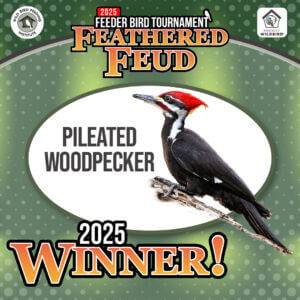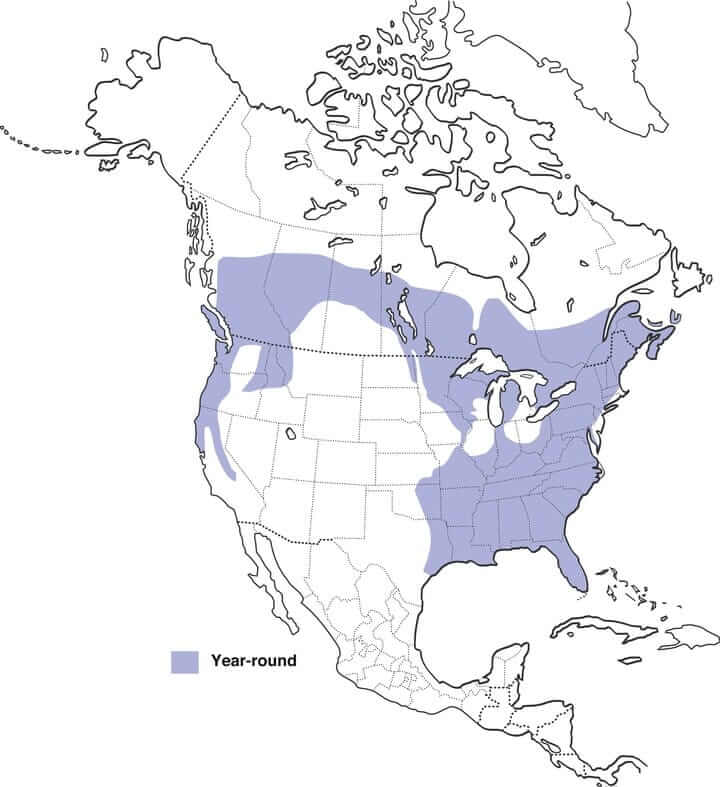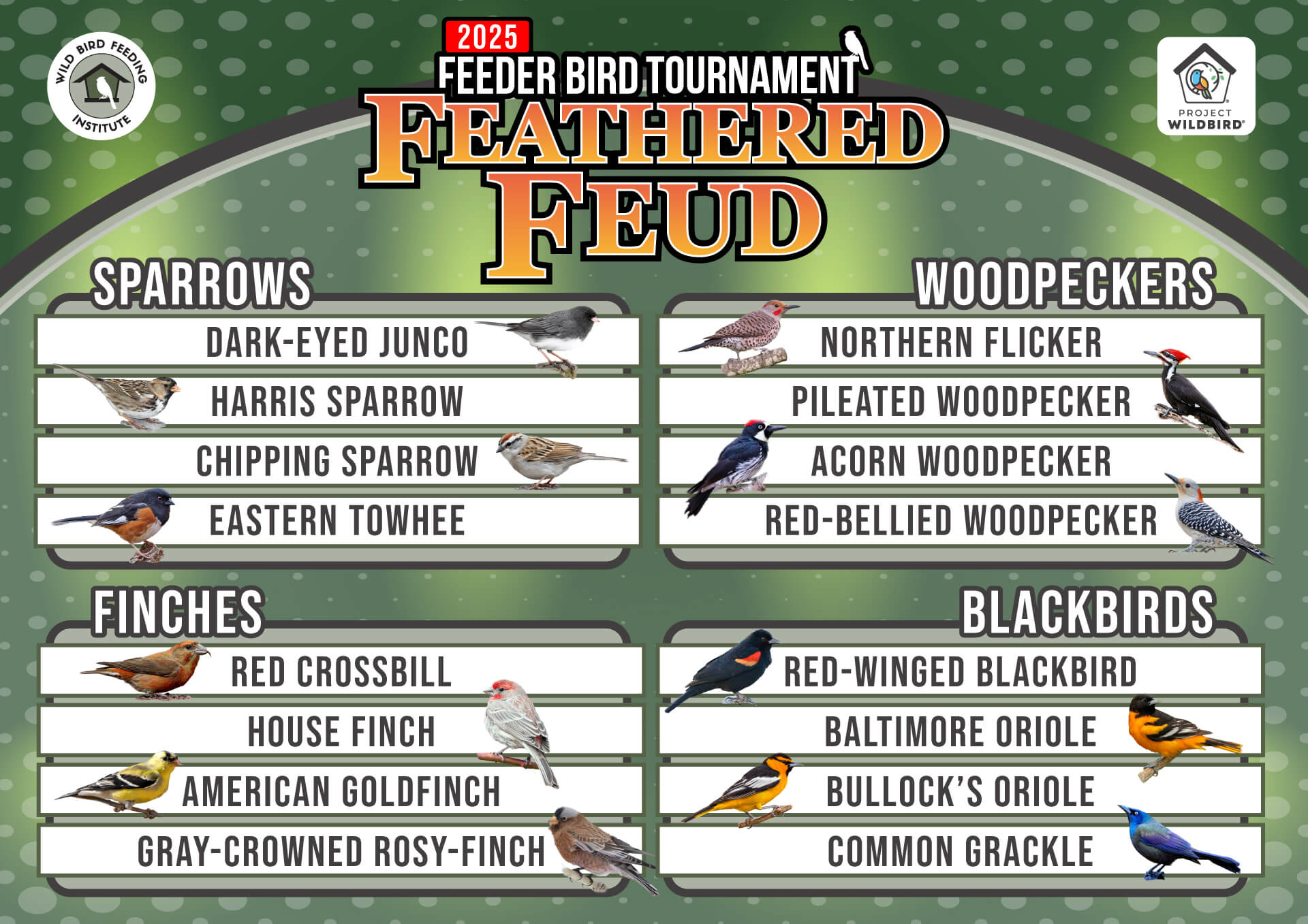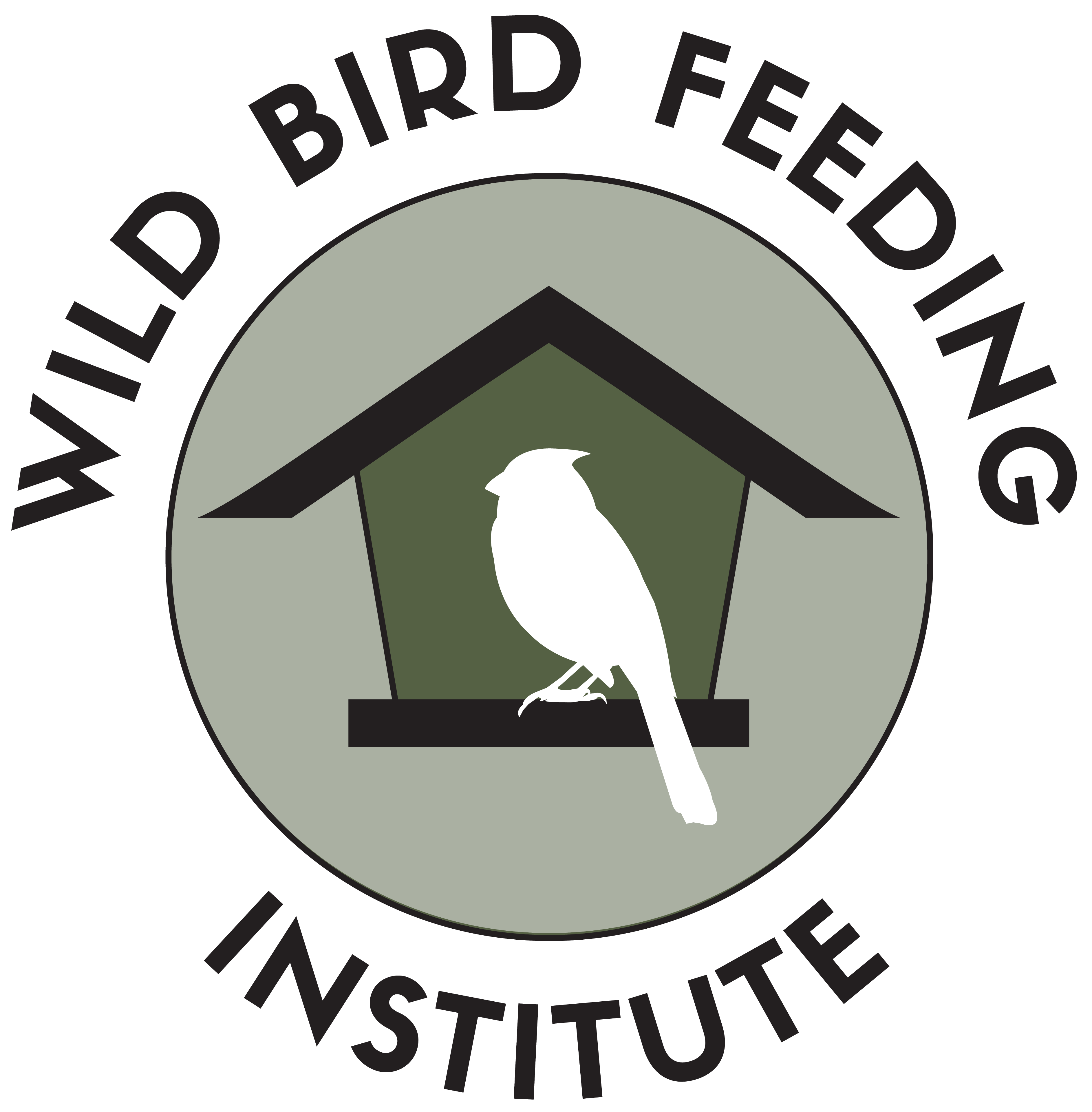2025 Feeder Bird of the Year: Pileated Woodpecker
The 2025 Feathered Feud Showdown determined the most popular backyard bird of the year through comment votes via Facebook, Instagram, and LinkedIn! The bird with the most votes that is now crowned the 2025 Feeder Bird of the Year is the Pileated Woodpecker!

The Pileated Woodpecker is one of North America's most striking forest birds, nearly the size of a crow, with
 bold white stripes down its neck and a flaming-red crest. They inhabit a wide range, including the eastern United States, parts of the Pacific Coast, the southern half of Canada, and even some parts of Mexico.
bold white stripes down its neck and a flaming-red crest. They inhabit a wide range, including the eastern United States, parts of the Pacific Coast, the southern half of Canada, and even some parts of Mexico.
Pileated Woodpeckers are often found in mature forests with many dead trees and fallen logs. They are known for their deep, loud drumming and shrill, whinnying calls. These woodpeckers dig characteristically rectangular holes in trees to find their main prey, carpenter ants.
The nest holes and feeding excavations created by Pileated Woodpeckers offer essential shelter to many species, including swifts, owls, ducks, bats, and pine martens.
Attracting and Feeding Pileated Woodpeckers
If you have dead or dying trees on your property, consider leaving them alone as they may attract Pileated Woodpeckers to forage, roost, or even nest. You can also put up a nest box to attract a breeding pair, ensuring it's up well before the breeding season and equipped with a guard to protect against predators.
To feed Pileated Woodpeckers in your backyard, you can offer foods they love, such as suet, peanuts, and sunflower seeds. Suet feeders are particularly effective, as these birds are attracted to the high-energy food, especially during cold winter months. Fruit-bearing trees and shrubs like elderberries, blackberries, and hackberries can provide a great natural food source. Providing a water source, such as a bird bath, can also help attract these woodpeckers.
READ: Attracting Backyard Birds
The Pileated Woodpecker is a fascinating bird that not only captivates with its striking appearance but also contributes significantly to the health of forest ecosystems.
For more detailed information, you can visit the Cornell All About Birds guide.
Follow WBFI on Social Media channels to learn more about this bird and vote in next year's competition!

